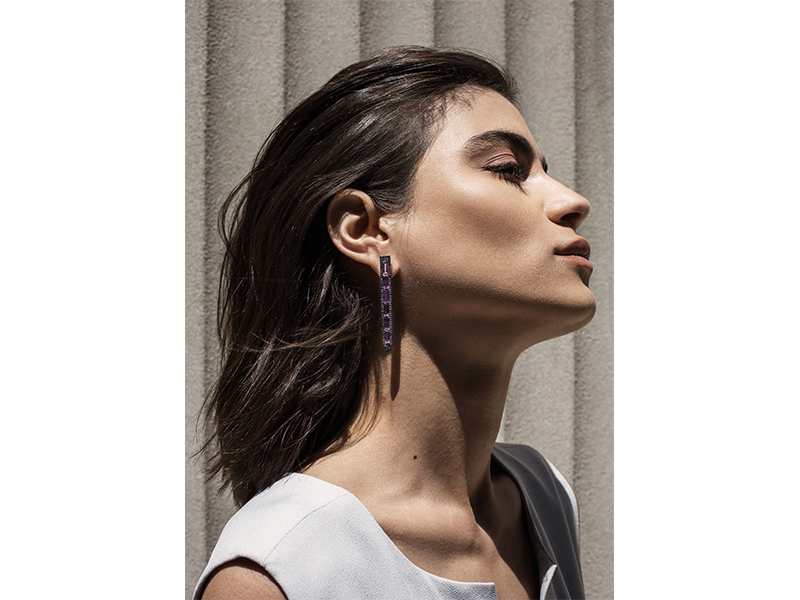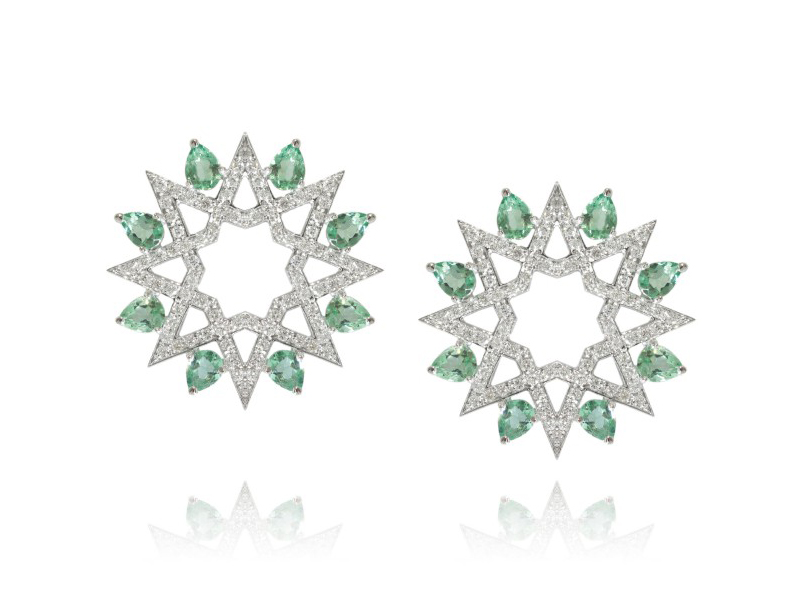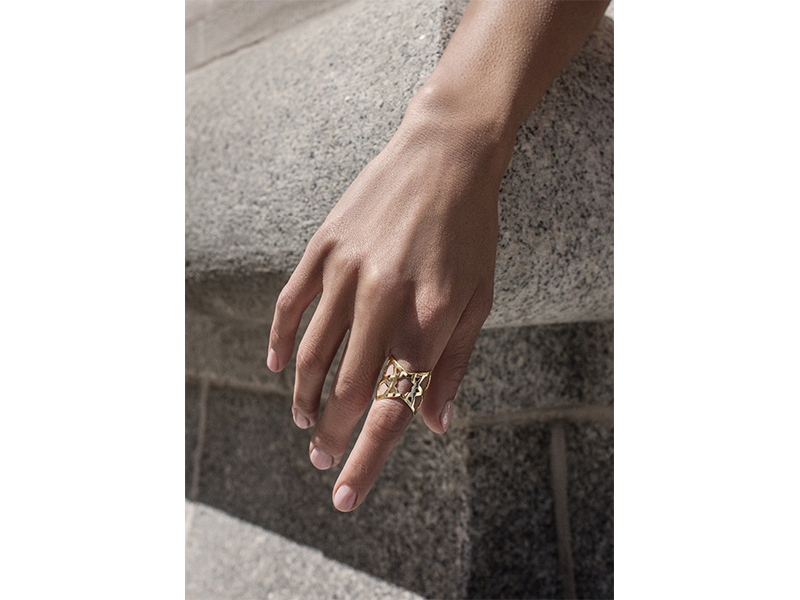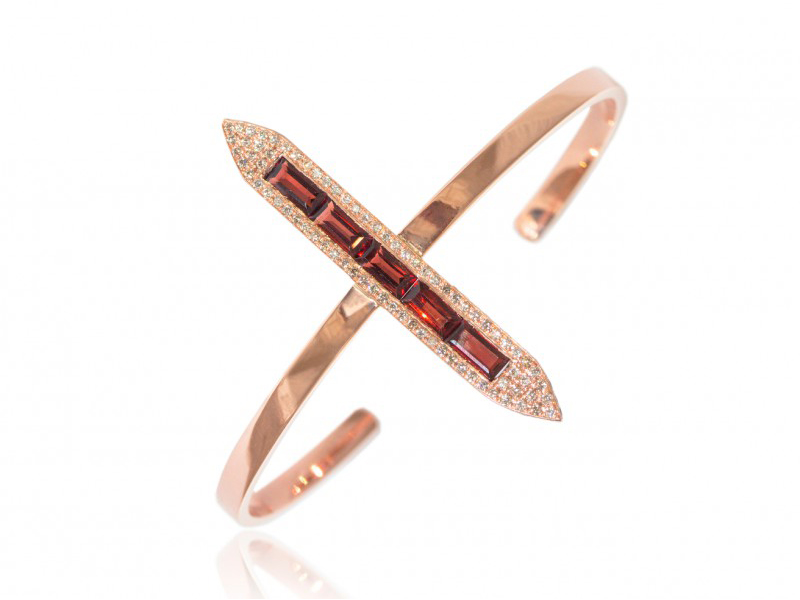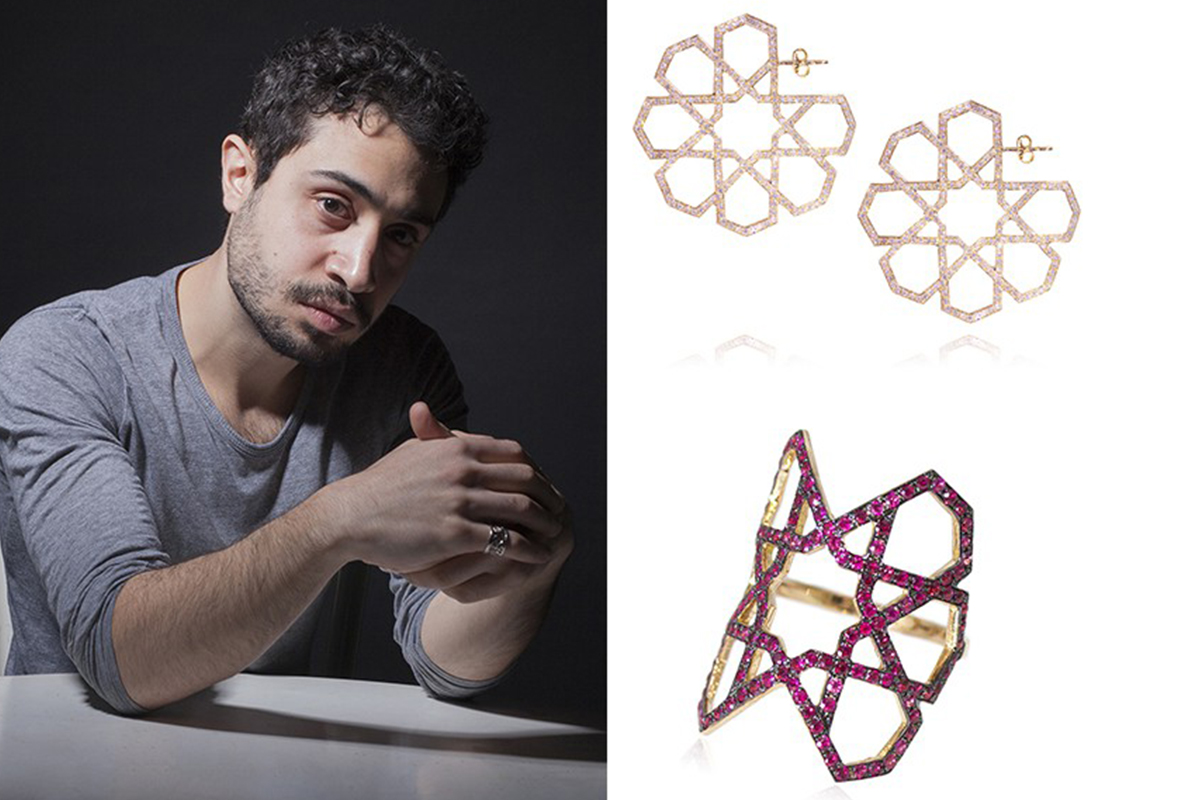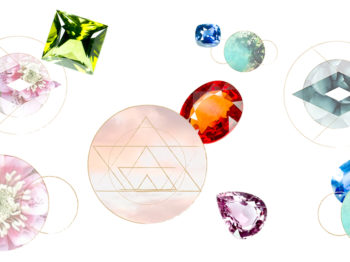Ralph Masri revels in fusing the decorative power of traditional costume jewellery with the precious contemporary elegance of fine jewellery. Confirming his love for architecture and passion shapes, he delves into a historical interpretation of collections (Phoenician Script, Sacred Windows or Arabesque Deco) that are journeys through bygone cultures and symbolic motifs within his collections.
In addition of being the author of The New Artisans (2011), The New Jewelers (2012), Olivier Dupon just launched his latest book named “Fine Jewelry Couture”. As a freelance reporter for The Eye of Jewelry, Dupon managed to interview Ralph Masri, founder of his eponymous jewelry brand.
The interplay between boldness and clean geometric lines demonstrates a chic and highly creative hand at work. Ralph Masri indeed revels in fusing the decorative power of traditional costume jewellery with the precious contemporary elegance of fine jewellery. His creations merge with the limbs and become part of them. Each angle, spike or stroke elongates an earlobe, highlights a finger or enhances a wrist. Here emptiness is as important as solidity, an approach essential for architects and inherent to Ralph’s work. This is somehow ‘anti-statement’ jewellery at its finest, defined not by ostentatious wealth but by a pared-down, formalistic sensibility. The structural frame of each piece is indeed deceptively minimalist, yet majestic enough to confer plenty of graphic elegance and to make onlookers shed envious glances at the Ralph Masri wearer.
Although Masri found his passion for jewellery quite early on – the launched his company in 2013. With prices ranging from $700 for plain gold rings and going up to $20,000 for diamond paved pieces, Ralph Masri manages to seduce a large clientèle with his omnipresent pictorial style. Buying one of his pieces is more than acquiring a cool precious accessory: it is an invitation to delve into a historical interpretation of collections that are journeys through bygone cultures and symbolic motifs, a juxtaposition of East and West influences, for the past and his Lebanese heritage are Masri’s main sources of inspiration for his futuristic renditions. Let’s find out more about the 26-years-old jewelry designer who happened to be the youngest nominee at the UK Jewellery Award 6 years ago!
What does trigger your jewellery passion?
I love the tactile and sculptural aspect of jewellery, and especially the preciousness of fine jewellery. I really enjoy working with precious materials like gold and gemstones, and seeing sketches on paper come to life. That said ,I would have been a chef (food is one of my biggest passions!) had the jewellery bug not hit me.
My parents were both in the jewellery field so it’s something I grew up with, but as a kid I wasn’t really interested in following that path. I eventually discovered my real love for jewellery as a student during my foundation year at Central Saint Martins – at the age of 18 – where we experimented in all different fields of design, and I eventually realised that jewellery was the one I truly enjoyed the most.
What has led you to where you are today?
Obviously creativity is my main trait, but another very important one is ambition – I’ve always been an extremely ambitious person and I wouldn’t have accepted any other path for myself. Combining those with good business acumen has helped make it possible for me to be here today.
What’s your philosophy?
My top priority when designing is my identity. There needs to be coherence in my collections, a common thread that links them somehow so you can recognize them as mine. I am not interested in simply designing something that sells – it needs to be reflective of my vision and me as a designer, something I am passionate about. Obviously the commercial aspect is very important but what’s more important for me is that I design something I can be proud of.
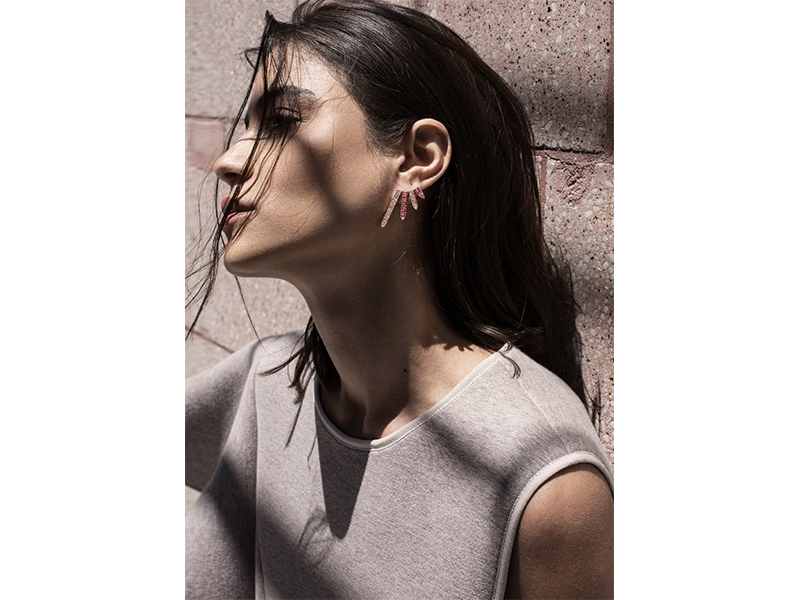
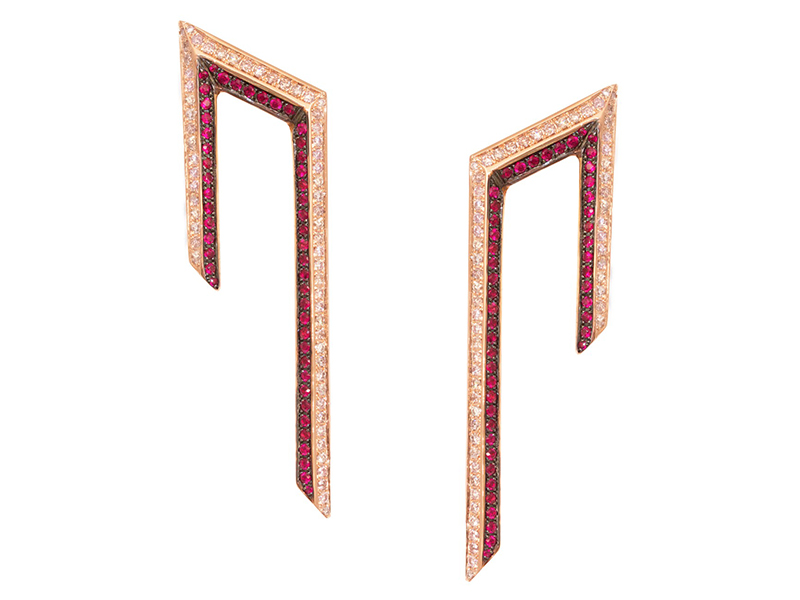
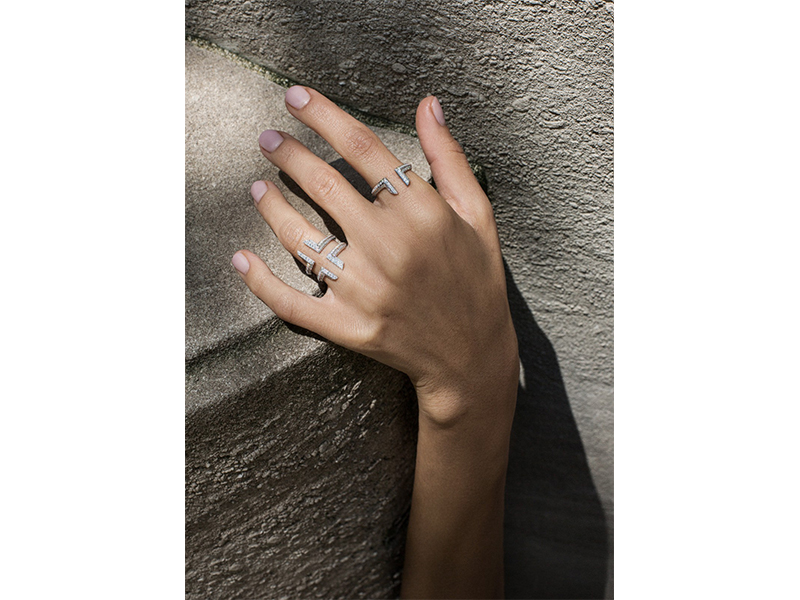
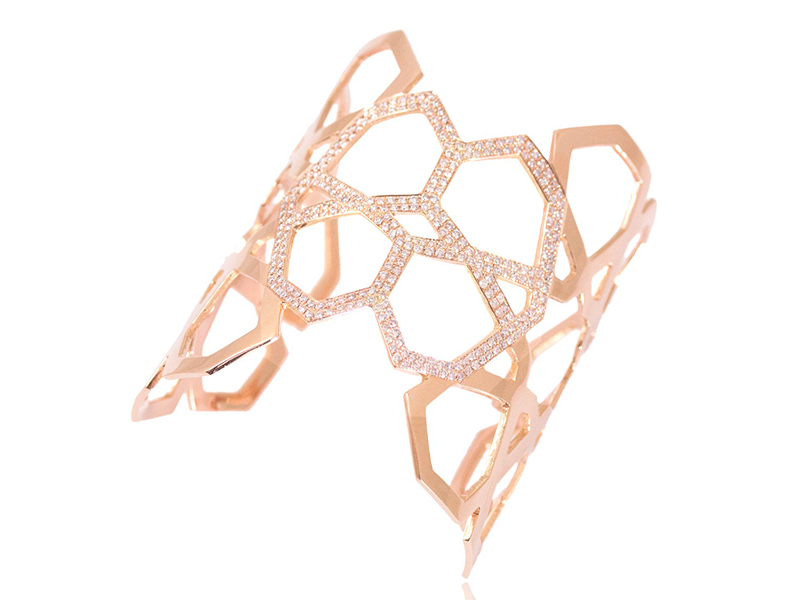

How do combine costume jewellery appeal with fine jewellery preciousness?
I love the boldness and adventurous spirit of fashion jewellery, and when I launched my brand I set out to fuse that spirit with that of fine jewellery. Obviously when you deal with 18kt gold and precious stones you can’t go too crazy with weight and volume so the trick is to strike the right balance, to create bold jewels that still retain their preciousness and finesse.
Why sculptural shapes and ancient cultures?
From a young age I had always loved working with my hands. I really enjoyed creating things and I was very into arts and crafts at school. Combined with my love of sketching and designing it eventually translated into my interest in making jewellery. Even now I still work most of my jewellery pieces myself, and I make all the prototypes by hand. I also love structure and clean lines – I see jewellery as almost a miniature form of architecture. Besides I am a history freak and to me the world’s most beautiful creations, from art and artefacts to architecture, come from the past. So I like looking to the past for inspiration in my work.
How are you positioning yourself in the world of independent fine jewellers?
I think there’s perceivable passion and effort put into my designs. I do a lot of research, and there’s a distinct way in which I work shapes and colours – I create a story with each collection. I feel my style is beginning to become recognisable and stand out when compared to what’s out in the market.
What is your vision of the fine jewellery world at the moment?
I think the field is in a great place at the moment as there seems to be a boom in interest in independent designers where previously it was all about the big houses. Although there is immense competition at the moment, I feel that young emerging designers with unique styles now have a better chance of being noticed than ever before. But there is also an oversaturation of independent designers creating designs that are all too similar and generic. Moreover there is the issue of copycats. There are so many of them out there and many that get away with it too. There’s nothing worse than a designer who takes credit for something he/she didn’t create, but it’s unfortunately very common in the industry.
Find out about Ralph Masri’s collections: www.ralphmasri.com
